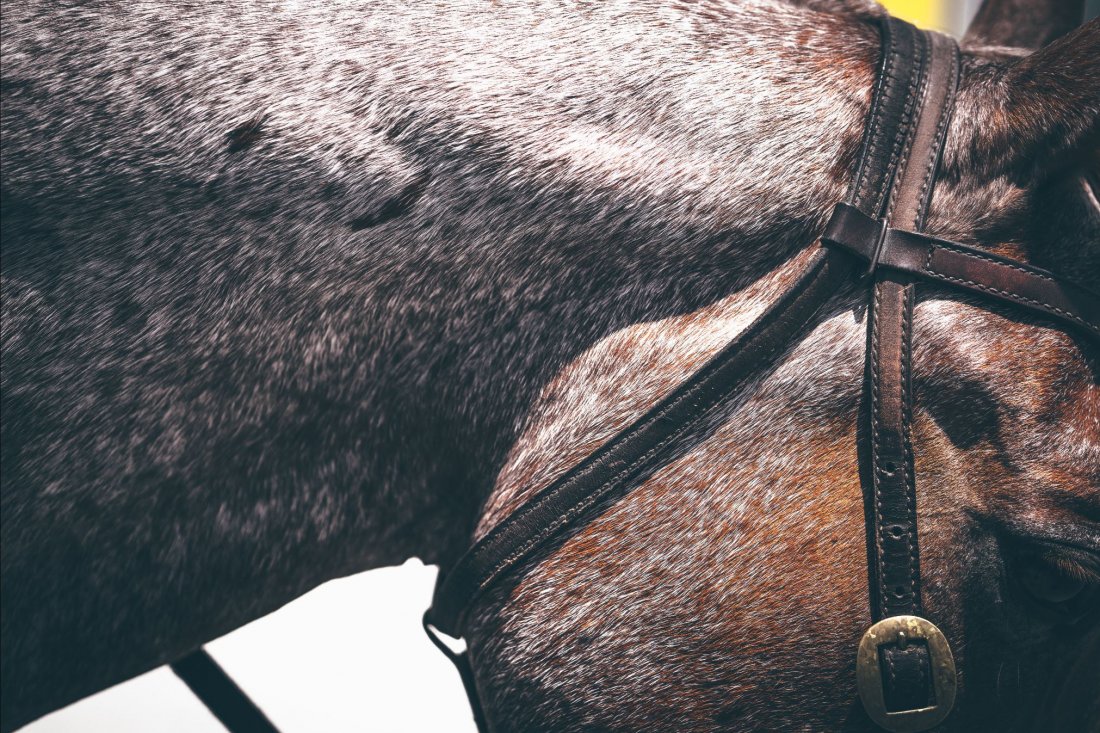
Horse coats are fascinating. There’s bays, grays, chestnuts, blacks, and palominos. But then there’s even more variety – there’s variations on those basic coat colors, modifying colors and giving some horses unique patterns. Horse coats are so important to us, we even have whole breeds that were created just around coat variation (looking at your, Paint Horse Association).
My interest in coat colors started with my own horse. I’ve owned Vintage, my appaloosa mare for over 20 years now. I’ve had her since I was a kid. She’s a bay appaloosa with a snowflake pattern.
Don’t ask me why, but in my mind, I considered this roaning. She’s got lots of white hairs all over her body, that is roan, right? She’s become progressively lighter every year, which I still thought was roan.
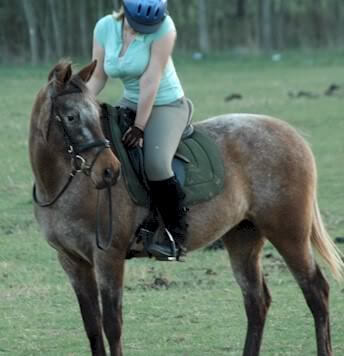
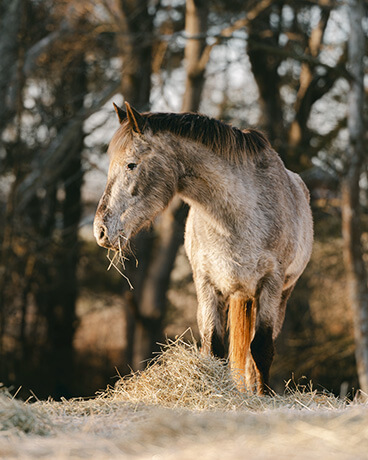
But one day I came to the startling realization that she’s actually not roan. Roan doesn’t change. Horses with the roan gene show their roan after their first foal shed, and it sticks with them the rest of their life. What I was seeing was an appaloosa changing her spots.
Instead, my other horse, the beautiful Stubert, might be a roan. Yes, that big chestnut boy has little white flecks of hair on him. It’s so small that it’s not even visible on camera. His full brother, who I also met, is a roan bay and it’s extremely visible. Since Stu’s roan isn’t very visible, I don’t even have photos of it. It looks like a standard chestnut coat.
What is Roan?
Roan seems like it would be easy enough, it’s white hairs across a base coat. But, as I’ve found out, it’s not so simple. Roan horses are born with their color (which only shows up after the first foal shed), and then it never changes, that is their color for life. Except in a few circumstances:
- With the skin is damaged, sometimes by even the most minor of scrapes, the hair grows back solid colored. They are called “corn marks.” No injury but they still appeared? Well, having an injury wasn’t required! Unlike vampires, they don’t need an invitation to show up.
- When the horse is in really good health, they can develop reverse dapples. Usually, dapples show up darker than the surrounding coat, but on roans, they show up lighter.
Different Colors of Roan
Roans come in a huge variety, since the base coat can differ, as well as the amount of white hairs. Some horses get a lot, some horses get just a sprinkle. There isn’t usually any white roan hairs on the head, lower legs, or mane and tail though.
Roan can be present on any color base, but it is harder to see on lighter colors. There are however, three different bases that are seen most frequently.
Red Roan
Chestnut with roaning, also called a strawberry roan. This would be Stu’s color, if I felt comfortable enough to use that term with him. Since he’s such a light roan, it makes me uncomfortable.
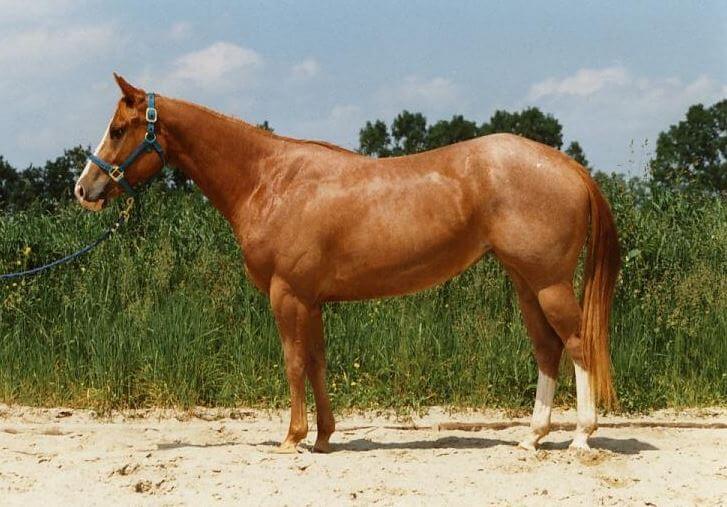
Blue Roan
A black base with roaning is a blue roan.
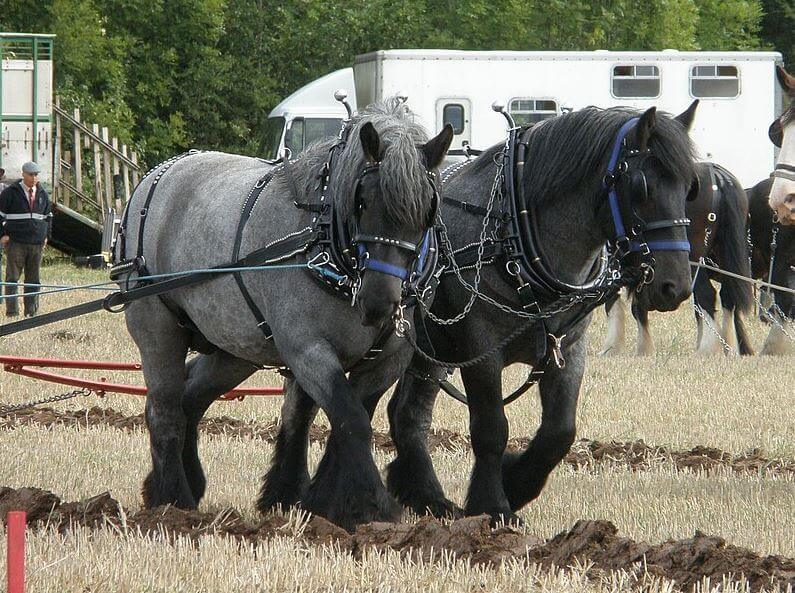
Fun Fact. when I was in middle school, without a horse, eager to learn anything about horses, I was talking with an acquaintance about horses. She had a horse, and I naturally wanted to be friends with anyone who loved horses. I asked her if she knew about blue roans, and she said yes, and I asked if they actually look blue. She said yes. I was in amazement, imagining a horse the color of the sky. The fact that I’d never seen a horse that color did not dissuade me.
I’ll never know if that’s what she meant, or if she was being really generous with the idea of “blue.” Unfortunately we did not become friends so it never came up again. I know a lot of animals have coats that people call “blue,” but I refuse to believe that’s actually blue. Just look at the image above, those horses are wearing blue halters, and the horses and the halters are clearly not the same color.
Bay Roan
Bay base with roan.
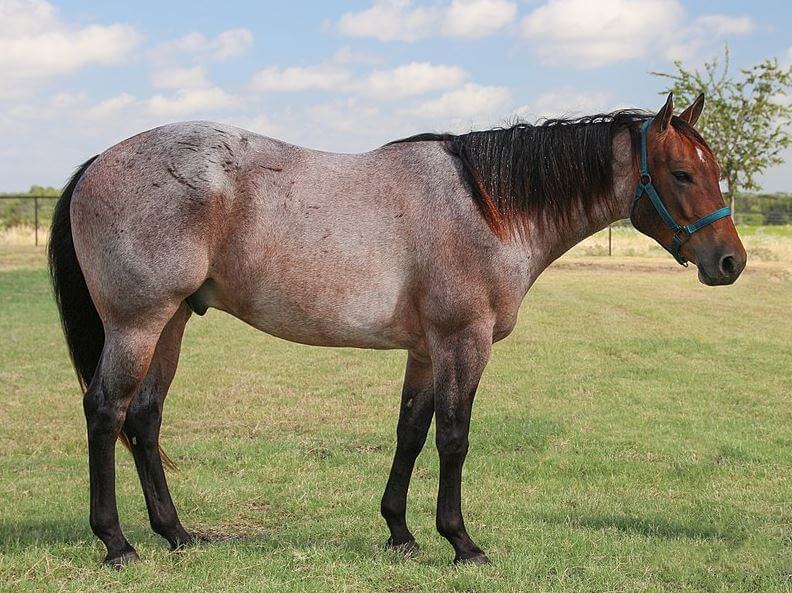
Are you perhaps wondering why you don’t see roans very often? Well, they seem to run in certain bloodlines/breeds, so you’d have to be hanging around with these breeds to see them. For instance, for those who hang out with thoroughbreds, there’s only been one thoroughbred line, Catch a Bird, genetically verified as true roan. You’re not likely to see any true roans there.
Breeds that do have prominent roan include some European draft horses like the Ardennes, and some common US breeds such as Quarter horses, Paints, Standardbreeds, Missouri Fox Trotters and Tennessee Walking horses. Some other breeds are Icelandics, Connemaras, Welsh and Shetland Ponies, and Paso Finos.
Interestingly enough, there are no Arabians that have been genetically proven to be roan. Arabians that look roan are instead speculated to be horses graying out.
To add a layer of confusion, it’s impossible to say exactly how many horses are true roans, as many of the registrations accept owner interpretation, without being DNA tested. For instance, I didn’t get Stu tested, I’m just going off what I see. It’s possible he’s not a roan, and I’m seeing something else. Honestly it feels weird to call him a roan to begin with, there isn’t that much white hair. I’ll get him tested for a follow up.
What Causes Roan?
Roan is caused by a dominant gene (Rn). Rn is a modifier of other coat genes, so a horse might have a dominant bay gene, modified by the roan gene, resulting in the bay roan.
Roan must be present, meaning visible, in the horse for it to be passed on to the next generation. There’s no skipping of generations here. In events where it seems like the horse is miraculously born with roan out of non-roan parents, further inspection will likely show that a parent is actually a roan, it was just well hidden.
Since the gene is Rn, it doesn’t mean that roan children are guaranteed. But you might assume that two roan parents would increase your chances of getting roan, right? Well, it might, but it might also increase the chances of fetal death. After noticing that two roans breed together was resulting in fewer foals, a study was preformed. The 1979 study of Belgium draft horses (Hintz; van Vleck. “Lethal dominant roan in horses”. Journal of Heredity 70: 145–6.) found that the in the homozygous condition with two parents having the roan gene resulted in death to the embryo, much like how lethal white works.
But, confusingly enough, in the time since that study, some quarter horse stallions have been proven to be homozygous through genetic testing, which puts some doubt in the study.
In 2020, a new study came out, this time using Icelandic Horses. This time, they were unable to find any proof that homozygous roan would result in death.
Is it possible that it’s different depending on the breed? Do Belgium drafts have another gene that contributes to the death? All questions I can’t answer. But overall, it seems the best practice for breeding two roans would probably be genetic testing, just to be sure.
Testing Your Horse
Suspicious that your horse is a roan, but not quite sure? There could be something fishy going on with that coat. Well, you are in luck, because you can figure out 100% if your horse is a roan or not. UC Davis offers many genetics tests, and one of them tests for the roan gene. Your gentle heart will be at peace, knowing for sure if your horse is a roan.
Are you realizing now your horse is a roan? Or maybe you’ve discovered they aren’t? Tell me about it below!
I love that we have so much variety in horse coat colors. It’s a fascinating topic, and it’s incredible how much a horse’s coat can differ from each other. I’m a lover of all coat colors of course, a healthy coat is the most beautiful of all.
Hopefully this simplified roan coloration!
Curious about other coat colors? Find out about the epic battle of Sorrel Vs. Chestnut.
